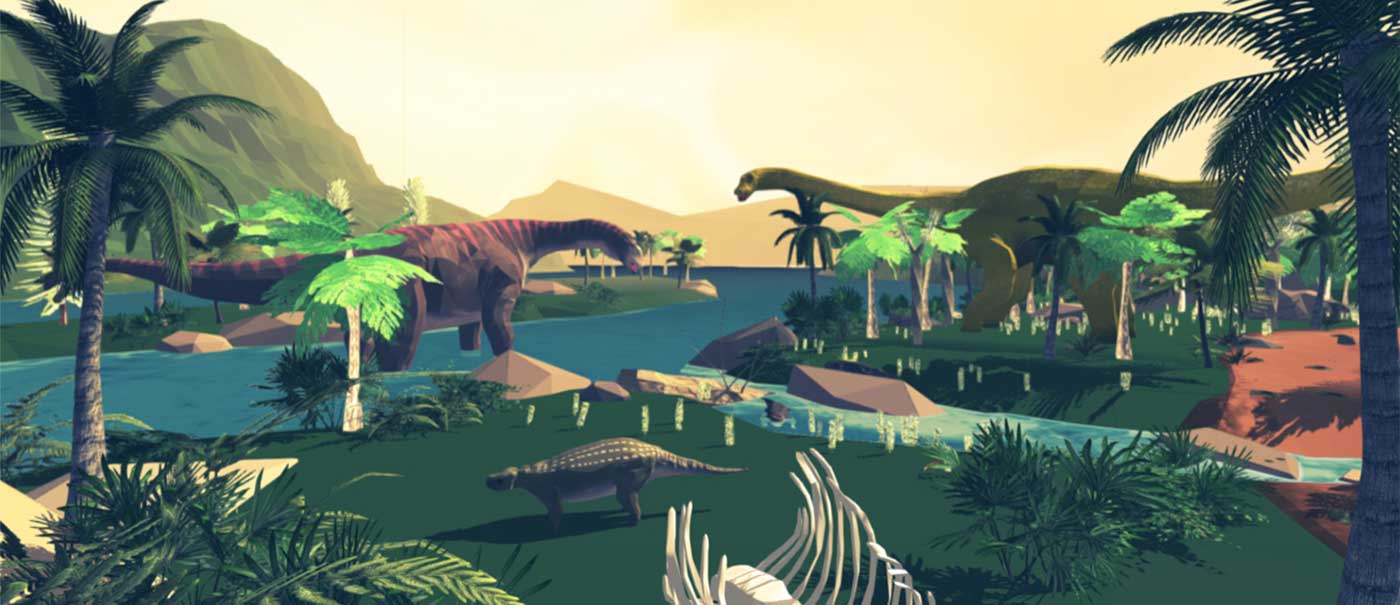Welcome
Our prehistoric Australia teacher resources include creative projects, assignment questions and online activities, all linked to the Australian Curriculum.
They were developed for use with our Kids learning space, where videos, photographs and background help provide answers and inspiration for students.

Setting the scene
Kspace took visitors to prehistoric Australia, 110 million years ago. The continent itself has changed both its shape and position continuously over hundreds of millions of years, and the animals, plants and landscape are markedly different.
Questions children can keep in mind:
- What do you see here that is different from today, and what is the same?
- Are the plants and animals familiar or strange?
- What is the landscape like in deep-time? What is similar to today’s landscape?
- Download Prehistoric Australia visitor access guide4.6 mb pdf [ PDF | 4.6 mb ]
Primary source study
The Great Artesian Basin covers a similar area to the vast inland Eromanga Sea of prehistoric Australia. This map helps show the scale of the basin, where sediments left by the sea have helped to create conditions that allow freshwater to be trapped and stored today.
Online quiz
Ten multiple choice questions for students to demonstrate their knowledge about prehistoric Australia. The quiz questions and answers are also available in a printable version PDF, 100.57 KB
Exercise
Exercise 1: ‘What kind of animal am I?’ online
Students explore the ways in which groups of related animals have evolved to survive in different environments, by selecting the correct habitat, type and diet for ten animals. Suitable for years 3 to 6.
Exercise 1: ‘What kind of animal am I?’ printable worksheet
Students can work together or by themselves to cut and paste the words from the answer sheets, or they can write their answers to the questions in the spaces provided. Suitable for years 3 to 6.
- Download What kind of animal am I?10.6 mb pdf [ PDF | 10.6 mb ]
Creative projects
Suggested projects for children to make and do.
- Create a diorama or draw a picture of a scene from the Mesozoic era.
- Imagine you are a time-travelling journalist covering the extinction of the dinosaurs. Write an article or perform a news broadcast on the unfolding events.
- Produce a poster showing the three main periods of the Mesozoic, including some of the main life forms from each.
- Design a timeline of life on Earth, showing when life began and the first appearance of groups such as insects, vertebrates, flowering plants, amphibians, reptiles, grass, mammals and humans. Consider adding geological periods such as the Cambrian, Carboniferous, Jurassic, Cretaceous and Tertiary.
- Write a short story about a scientist who travels back in time to a period in the Mesozoic.
- Create a comic book about a group of children who find a live dinosaur egg.
- Compile a PowerPoint presentation on a famous Australian dinosaur site.
Written assignments
Suggested assignments questions encouraging children to think and write.
- What does the term extinct mean? What are some common causes of animal extinction?
- Dinosaurs are extinct. What are the risks today of animal extinction?
- Some dinosaurs were carnivores and others were herbivores. What do these terms mean? How are these types of dinosaurs different (in teeth, body size and shape, digestive system) from each other?
- Discuss the phylogenetic relationship of dinosaurs, mammals, crocodiles, turtles, lizards and birds.
- Examine an illustration of a dinosaur or another prehistoric creature. Discuss the depiction of elements including anatomy, behaviour, posture, diet, skin colour, texture, habitat, geology, climate, vegetation and any other animals.
Note: inspiration and answers for online activities, creative projects and written assignments can be found in the Kids learning space
You may also like